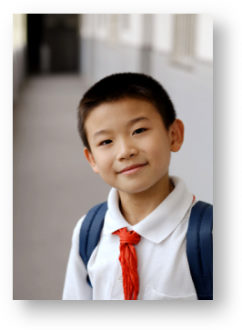As regular readers to this blog know already (and as I write in the top section of every Asian-Nation post I write), I feel very strongly “public sociology” — to make sociological theory, research, and data as accessible to as wide of an audience as possible, and as applicable to real-world issues and situations as possible. I recently received an email that gave me just that opportunity.
Specifically, one reader wrote to me:
I am a full time elementary school teacher and I will have a new student in a few days from China. He and his family do not speak English–they are opening a restaurant in our small community. In our community, he will be the only Asian child. What can I do to help him not feel so alone and alienated? I know language will be a problem, but what could I as his teacher do to help? I was scanning the internet trying to find resources and found your site. Thank you for your time.
I replied back:

(1) Some time ago, there was a commercial (I forgot what the actual product or service was), but it showed a young Chinese boy about to enter a predominantly White school for his first day. Before entering, he was speaking in Chinese with his mom outside and told her, “My English is not good. What if the other students hate me?” His mother calmly replied, “You’ll be fine.” As he entered his classroom escorted by the principal, the teacher introduced the new student to the class. Then the entire class welcomed him by saying in unison, “Ni hao [student’s name]” — translated, it means “Hello [student’s name].” It was very sweet and it would be great if your class would do the same.
(2) You may already have plans to do so already, but I’ve heard from many educators that it helps new students if one or two other students are assigned to be their “guide” or someone who will spend time him the new student, show him around the school, eat lunch with him, introduce him to other students, and basically act like an ambassador for him to make him feel more comfortable.
(3) You may know Google Translate already
(4) Perhaps some time in the future, your class can make a field trip to his parent’s restaurant to learn about Chinese food, running a small business, etc. This would be a great way to welcome the family to the community and to show the other students that he is welcomed in their class.
(5) Finally and perhaps most importantly, I hope you and the rest of the teachers and administrators can do whatever possible to stay on top of any incidents of racial teasing. Nothing will alienate the new student more than if other students start making fun of him because he’s Chinese — because he’s different than everybody else around him. With that in mind, it is absolutely critical to let the other students (in your class and elsewhere) that it is not acceptable to make fun of him because he’s Chinese and that any such incidents will be punished. This how we start to break the cycle of racial prejudice — one student at a time.
The teacher wrote me back and thanked me for the ideas and seemed very excited about them.
This question of how a school, administrators, teachers, and students can best welcome new student who is both an immigrant and a racial minority to their class got me thinking that, rather then just giving her my ideas, I should “crowdsource” this question and ask all of you for your suggestions on how to best welcome this new student.
If you have been in this situation, either as the new student, one of the existing students, or the educator, what were some ways to make this new student feel welcomed and comfortable? Or even if you were never in this situation, what are some strategies to try? If you are a researcher who is familiar with this issue, what are some “best practices” that have been shown to be effective? I would love to hear from others with your ideas and suggestions.
As globalization and demographic changes keep taking place and as U.S. society and more communities around the country like this become more diverse and multicultural, this kind of situation is likely to become more common. In other words, this is sociology taking place in the real world.
This article originally published at Asian-Nation.org and is copyrighted © 2013
